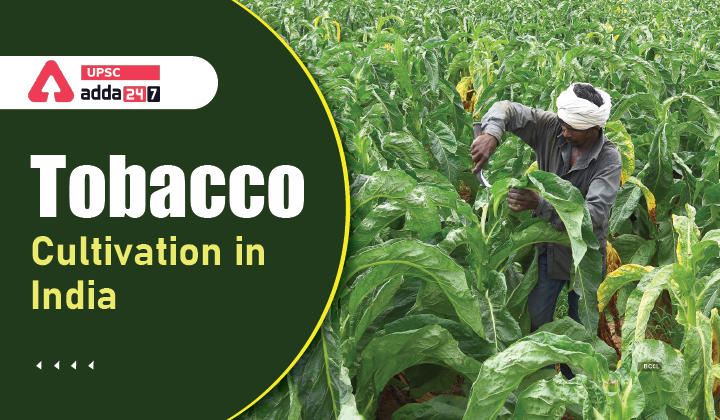Table of Contents
Tobacco production in India: Relevance
- GS 3: Major crops-cropping patterns in various parts of the country
Tobacco cultivation in India: Context
- Recently, the Andhra Pradesh Markfed has created history by exporting to the U.S. on a pilot basis 120 tonne of tobacco, a first by a government agency.
Tobacco Cultivation in Andhra Pradesh: Key points
- Andhra Pradesh is a major tobacco producing State in the country.
- Tobacco Board regulates tobacco production in the country, and has set the crop size for Andhra Pradesh at 130 mkg last year.
Tobacco cultivation
- Tobacco (Nicotiana tabacum) is believed to have originated from South America.
- Present world production is about 3 million tons of leaves from 4.2 million ha.
Climatic condition for tobacco
- Tobacco is grown under a wide range of climates but requires a frost-free period of 90 to 120 days from transplanting to last harvest of leaves.
- Optimum mean daily temperature for growth is between 20 and 30°C.
- A dry period is required for ripening and harvest of the leaves.
- Excess rainfall results in thin, lightweight leaves.
- Except for some short-day varieties, cultivated tobacco is day-neutral in its response to flowering.
- The crop is sensitive to waterlogging and demands well-aerated and drained soils.
- The optimum pH ranges from 5 to 6.5. Quality of the leaves is affected by soil salinity.
- The water requirements for maximum yield vary with climate and length of growing period from 400 to 600mm.
Tobacco cultivation in India
- India stands second in tobacco production and exports in the world. China ranks first.
- Tobacco earns annually Rs 4,400 crores as foreign exchange and Rs more than 13,000 crores as excise revenue. Its total contribution to the national economy is Rs 18,255 crores.
- In India, the tobacco crop directly or indirectly supports around 36 million people engaged in production, processing, marketing and exports which includes six million farmers and 5 million people involved in bidi-rolling and tendu leaf-plucking.
- Thus, the crop is a lifeline for sizeable chunk of population, particularly rural women, tribals and other weaker sections of the society.
Read current affairs for UPSC





 TSPSC Group 1 Question Paper 2024, Downl...
TSPSC Group 1 Question Paper 2024, Downl...
 TSPSC Group 1 Answer key 2024 Out, Downl...
TSPSC Group 1 Answer key 2024 Out, Downl...
 UPSC Prelims 2024 Question Paper, Downlo...
UPSC Prelims 2024 Question Paper, Downlo...




